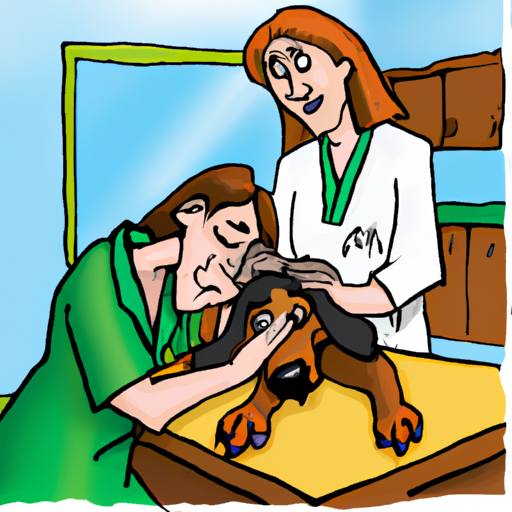As a caregiver, you play an essential role in the lives of your loved ones. Sometimes, this means making challenging decisions about their pets. Let’s talk about a subject that’s often difficult to broach – euthanasia for dogs.
Understanding Euthanasia
Euthanasia, often referred to as “putting down” or “putting to sleep,” is a humane and painless method for ending a pet’s suffering. It’s a decision not taken lightly, and it’s always advised to consult with a trusted veterinarian.
- Why Consider Euthanasia?
- Severe pain that can’t be managed with medication
- A significant decline in quality of life
-
Terminal illness with no chance of recovery
-
The Process of Euthanasia
- A sedative is administered to calm and relax the dog
- A lethal dose of an anesthetic agent is given, causing an immediate, painless death
The Emotional Aspect of Euthanasia
Euthanizing a pet can be a heart-wrenching decision. It’s okay to grieve and take time to process your feelings. Remember, it’s a choice made out of love and compassion.
- Seek support from friends, family, or pet loss support groups
- Allow yourself to mourn
- Cherish the memories
Preparing for the Euthanasia Procedure
Taking time to prepare both emotionally and practically can help ease the process. Talk to your vet about what to expect and consider the following:
- Choose the Location: Some people prefer at-home euthanasia, while others opt for a clinic setting.
- Decide who should be present: You, other family members, or even other pets may want to be there.
- Consider Aftercare Options: This could include burial, cremation, or a memorial service.
Costs of Euthanasia
The cost of euthanasia varies based on factors like location, the size of the dog, and aftercare. Here’s a rough estimate:
| Service | Cost |
|---|---|
| Euthanasia Procedure | $50 – $300 |
| Cremation | $100 – $200 |
| Burial | $400 – $600 |
After Euthanasia: Next Steps
After your pet passes, it’s important to remember the love and joy they brought into your life.
- Create a memorial: A photo album, a special place in your home, or a backyard tree can serve as a reminder of your pet.
- Take care of remaining pets: They may grieve too. Keep their routine as normal as possible.
- Self-care: Don’t neglect your physical and mental health. Seek help if needed.
Frequently Asked Questions
Q: How do I know when it’s time for euthanasia?
A: It’s a personal decision best made with your vet’s guidance. Consider your pet’s quality of life and suffering.
Q: Can I stay with my dog during the euthanasia procedure?
A: Yes, most clinics allow and even encourage owners to be present if they wish.
Q: Will my other pets grieve?
A: Yes, pets can experience a form of grief. Keep their routines normal and give them extra attention.
Q: What do I do if I’m struggling with grief?
A: Seek support from friends, family, or professional counselors. Pet loss support groups can also be helpful.
Remember, as a caregiver, your strength and compassion shine in even the most challenging decisions. Your pet’s wellbeing is always at the heart of what you do.



